Black Rock Desert and Thrust SSC
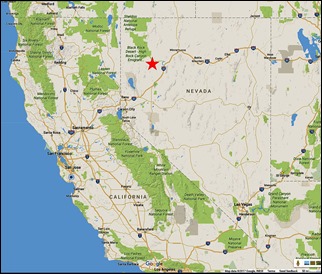 The huge expanse of northern Nevada known as the Black Rock Desert was once known only to remote-exploration stalwarts (like me) and local ranchers. With the advent of the well-publicized Burning Man extravaganza, Black Rock has become somewhat more famous (or perhaps notorious).
The huge expanse of northern Nevada known as the Black Rock Desert was once known only to remote-exploration stalwarts (like me) and local ranchers. With the advent of the well-publicized Burning Man extravaganza, Black Rock has become somewhat more famous (or perhaps notorious).
But the Burning Man occupies only a couple of miles’ worth of this enormous playa that reaches from the (previously) little-known town of Gerlach, all the way to and beyond the old, almost non-existent ghost town of Sulphur.
Although we’re not presently on the road (late January 2017), I was going through some older photos and found some interesting memories.
Over the years, we’ve previously traveled to and through the Black Rock many times, by both wheels and small aircraft. It’s a vast, unique, intriguing place, and well worth spending some time to explore. During my intensive flying days (roughly 1995-2010), I landed on or near the big playa many different times.
Landing a small aircraft away from an airport has different skill requirements, along with different risks and excitements. I wrote several articles on the experience, and learned a lot about flying, and the desert, in the process.
Both before and after my flying visits, I spent a lot of time on the ground, four-wheeling around the area and exploring both the playa and its surrounds. There are tens of square miles of dry, beige, caked mud – – but there are also hills and canyons, volcanic structures, ranches and hot springs. Old mining roads criss-cross the region, and exploration is irresistible.
For those of you not familiar with this unique geological feature, desert dry lakes are composed of highly concentrated muds, salts, and alkaline compounds. The combination of chemical intensity and arid conditions makes it impossible for plants to get established; dry lakes are totally without vegetation, Nature’s pool table so to speak.
The map (below, from wikipedia) shows the huge extent of the Black Rock area. The gray region is the biggest, flattest part of the old playa, about 5 miles wide and 15 miles long.
Obviously, there’s a vast amount of land to explore, by no means all of it flat desert dry lake. Much of it is accessible by almost any vehicle; some by 4X4, and the rest has to be hiked, or simply admired from afar. See the end of this post for links to more information.
Interesting note: the water that collects on a “dry lake” during rainfall is never deeper than a few feet. However, the underlying sediments are another matter. Some geologists think that these deposits can be literally thousands of feet deep, for these sediments have been filling up the original crustal fractures for millions of years. Think of a giant “V” of cracked rock layers, filling up with sand and dust over the millennia. Fascinating stuff.
THE SPEED RECORD RUN
One of history’s most noteworthy uses of the Black Rock was in 1997, when the Thrust SSC made its attempt at the land speed record. This giant black rocket car has to be one of the most bad-assed vehicles I’ve ever seen. (Photos courtesy thrustssc.com)
As it so happened, a friend-of-a-friend was flying in the area during the speed runs and was able to snap some fantastic photographs. One of the most outstanding was this long shot, showing the car moving along the playa at about 750mph.
The different light/dark areas are where the air is being compressed or rare-facted by the sonic pressure wave, causing a difference in its refraction of light. Unlike supersonic shock waves, which are conical, a just-sonic shock wave is almost a straight line. (It would sweep backwards if the care went faster.)
The other long straight line-triplets in the picture show where previous runs were executed. It took something like 7-10 miles to make a speed run – – but only a couple of minutes. Here are a couple of pretty cool videos of an actual run (there were a total of 66 runs made):
Thrust SSC cockpit cam – run #66
You can also get lots of info about the project overall at http://www.thrustssc.com
PLAYING on the PLAYA
Needless to say, a surface that can support 750mph jet car speed attempts is very tempting to get out there and see what ol’ Betsy can do. If you want to drive your car at its top speed, it’s totally legal – – and extremely dangerous.
Desert playas are strewn with various impediments to smooth travel. Despite the fact that locals use the Black Rock as a 100mph freeway, drivers must be alert for ruts, trash, rocks, and various debris that can make a very bad day out of a fun speed run. For the Racer Roy’s who have to give it a try – – watch out, and remember that you don’t have a lot of experience moving across the ground at 40 yards per second. Exhilaration becomes panic in less than a heartbeat.
If you plan on exploring the area, be aware that seasonal rains also can turn that 100mph dusty highway into a mud-bog swamp. Once a long time ago, I got buried up to both axles in a very nice 4×4, and it was a long day’s work digging and towing out. Don’t even THINK about driving on the darker-surfaced clay – – that’s the wet stuff.
[There’s a legend/story about an F-16 pilot who decided to make an unauthorized touch-and-go landing on a dry lake bed, sometime back in the ’60’s. Well, it turned out to be a “touch” only, with the F-16 burying itself in the thick clay and being unable to take off again. The pilot walked away from the airplane – – and his flying career. I haven’t been able to find any source on this — if anyone knows of such, please let me know.]
STILL CURIOUS? Here are some great links to more info on the Black Rock:
http://www.americansouthwest.net/nevada/black-rock-desert/
BLM – Black Rock Desert and High Rock Canyon

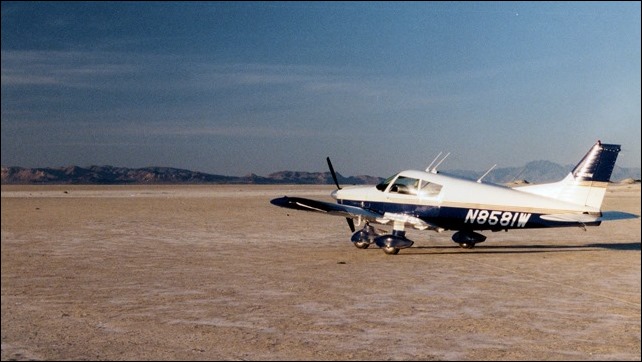
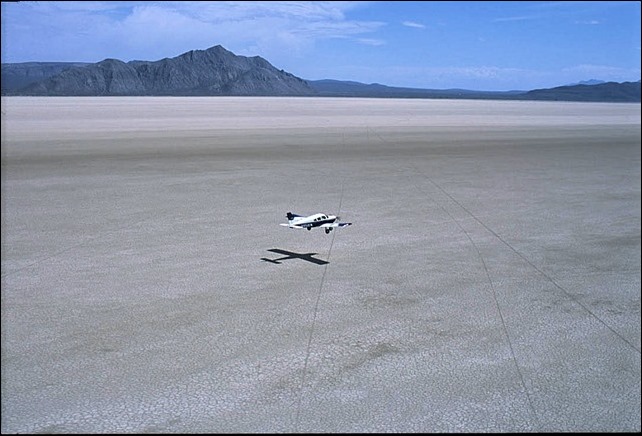

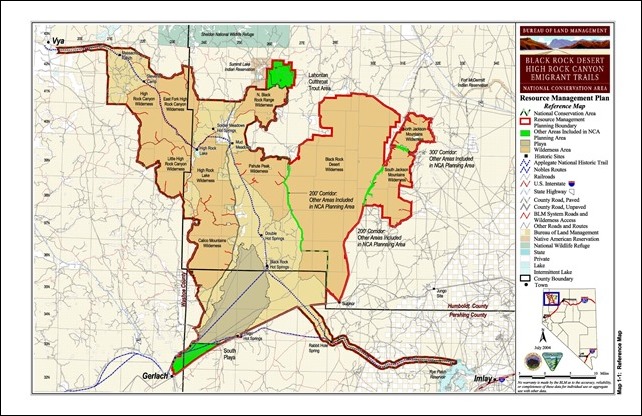
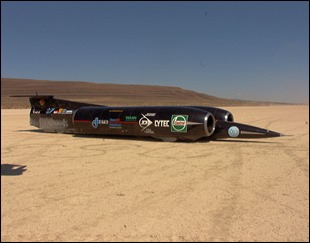
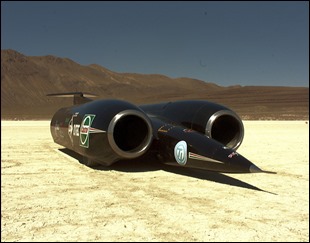
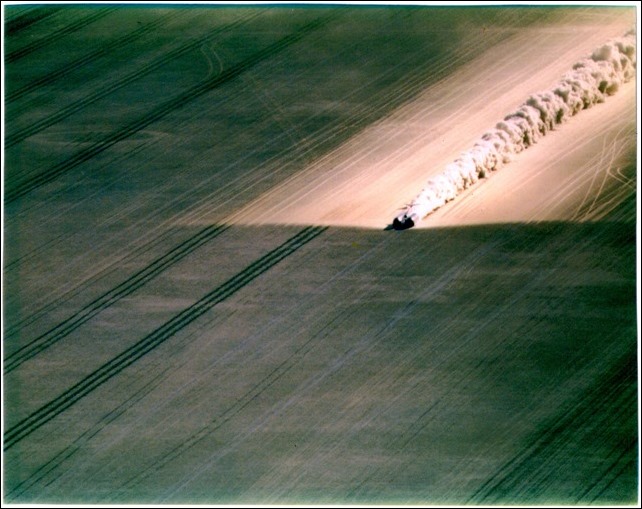
Hi Greg,
Very interesting post. I would love to read about your flying experiences too.
Ken
Thanks Ken, I might have to write up some of those fun (flying) times one of these days.
Hey Greg, I think your nickname should be “Mr. Science”. Also, when you post that “we” traveled somewhere, might you want to state “my lovely wife Karin and I”? I’m just saying…. Love you both!
Hey Barb,
Well, sometimes I do mean “Karin and I”, and sometimes I mean “Karin and Ralph and Howie and I”, so I just shorten it to ‘we’. Of course, my readers know all this from reading the ABOUT page….
:o)
Fascinating! Thanks, Greg. –Diane at RVtravel.com